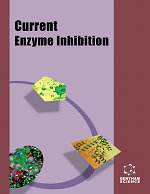
Full text loading...
We use cookies to track usage and preferences.I Understand
Enzyme inhibition is a crucial mechanism for regulating biological processes and developing therapeutic interventions. This pharmacological review summarizes recent advances in enzyme inhibition, focusing on key developments and their implications for drug discovery and therapeutic strategies. It explains basic ideas, including the different kinds of inhibitors and how they work, and looks at recent advances in small-molecule inhibitor design, fragment-based drug discovery, and virtual screening techniques. The review also highlights the advances in targeting specific enzyme families, explaining the structural basis of enzyme-inhibitor interactions, optimizing inhibitor potency, selectivity, and pharmacokinetic properties, and new trends in enzyme inhibition. The clinical implications of recent advances in enzyme inhibition include the development of novel therapeutic agents for diseases like cancer, infectious diseases, and neurological disorders. The review addresses challenges and future directions in the field, such as optimizing drug safety, resistance mechanisms, and personalized medicine approaches. Overall, the insights provided in this review may inspire further research and collaborations to accelerate the translation of enzyme inhibitors into effective clinical treatments.

Article metrics loading...

Full text loading...
References


Data & Media loading...

